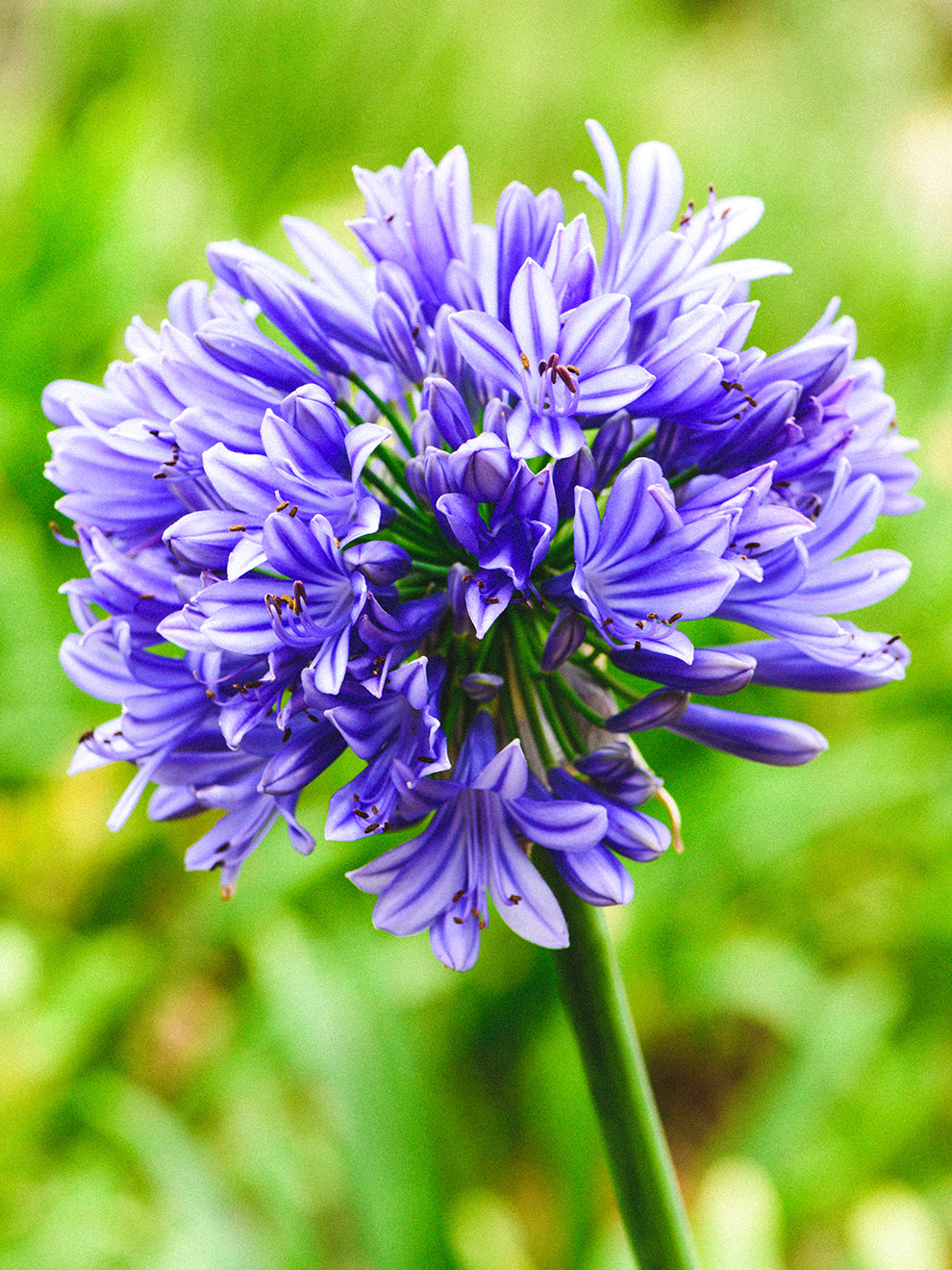Sensational Agapanthus: Enhancing Your Garden's Appeal
Sensational Agapanthus: Enhancing Your Garden's Appeal
Blog Article
Grasping the Art of Agapanthus Care: Vital Steps for Healthy And Balanced Growth and Vivid Blossoms
In the world of horticulture, the farming of agapanthus stands as a satisfying undertaking for those who look for to nurture these stylish blooming plants. From picking the appropriate variety to understanding trimming techniques, the trip in the direction of cultivating prospering agapanthus plants is multifaceted and holds the key to opening the full capacity of these agricultural gems.

Selecting the Right Agapanthus Selection

When picking the best Agapanthus variety for your yard, consider variables such as environment suitability, blossom color, and growth routine. Additionally, take into consideration the environment in your region to ensure the Agapanthus selection you select can flourish in your details conditions. Comprehending the development routine of various Agapanthus ranges is important for appropriate positioning within your yard.
Ideal Planting Conditions
Considering the optimum environmental requirements is necessary for effective Agapanthus farming. Agapanthus plants are delicate to cold temperatures and should be protected from frost throughout winter season months.
To make sure healthy development and dynamic blossoms, plant Agapanthus light bulbs at a deepness of concerning 2-4 inches and space them 8-12 inches apart. Including raw material, such as compost, to the soil can improve drain and fertility, promoting robust root advancement. Mulching around the base of the plants helps retain moisture and subdues weed development. Normal watering is essential, particularly during the growing period, to keep the dirt consistently wet but not waterlogged.
Watering and Fertilizing Tips
Keeping proper dampness levels and offering essential nutrients are crucial components in the treatment regimen for Agapanthus plants. When it concerns sprinkling Agapanthus, it is critical to strike a balance. If overwatered, these plants favor regularly wet dirt yet are vulnerable to root rot. During the expanding period, water deeply once a week, making sure the dirt is well-draining to stop waterlogging. In hotter climates or during periods of dry spell, more constant watering may be essential to keep the dirt uniformly damp. Nonetheless, decrease watering in the winter months to avoid waterlogged problems.
Fertilizing Agapanthus is important for promoting healthy and balanced growth and prolific blossoms. Use a well balanced plant food, such try this out as a 10-10-10 formula, in the early springtime as new development arises. Repeat this application every 6-8 weeks throughout the growing period. Prevent too much fertilizing, as it can cause lush foliage at the expense of blooms. Always follow the producer's guidelines for correct dilution and application methods. By adhering to these watering and fertilizing suggestions, you can guarantee your Agapanthus plants thrive and generate dynamic, durable blooms.
Pruning Techniques for Agapanthus
Pruning Agapanthus plants at the appropriate times and with appropriate techniques is critical for preserving their health and wellness and promoting optimal growth and blooming. The perfect time to trim Agapanthus is in late wintertime or early spring before new development emerges.
Deadheading spent blossoms can additionally redirect the plant's power right into producing even more blooms instead than setting seeds. If you want to accumulate seeds for proliferation, leave some blossoms to mature and dry on the plant.
Bear in mind to use clean, sharp devices to make specific cuts and reduce the threat of presenting diseases. Agapanthus. Normal pruning will certainly assist keep your Agapanthus looking healthy and cool while making sure a bountiful display of attractive blossoms
Dealing With Usual Pests and Illness
After making sure correct pruning strategies for Agapanthus, it is essential to address usual insects and conditions that can influence the wellness and vitality of these plants. One usual bug that impacts Agapanthus is the Agapanthus gall midge.
An additional usual concern is fungal fallen leave area, which presents as dark sores on the fallen leaves. To avoid fungal diseases, make certain great air flow around the plants, stay clear of above my latest blog post watering, and get rid of any kind of contaminated fallen leaves quickly. Additionally, Agapanthus plants can struggle basics with root rot if they are grown in inadequately draining pipes dirt. To avoid this, plant Agapanthus in well-draining soil and prevent overwatering. By being alert and taking punctual activity against bugs and illness, you can assist your Agapanthus plants flourish and produce dynamic blooms.

Verdict
Finally, understanding the art of agapanthus care includes selecting the ideal selection, offering suitable planting conditions, correct watering and feeding, appropriate trimming methods, and resolving typical bugs and illness. By following these essential steps, you can make sure healthy growth and vivid blooms for your agapanthus plants. Keep in mind to on a regular basis keep an eye on and maintain your plants to promote their total health and longevity.
To ensure healthy and balanced growth and vibrant blooms, plant Agapanthus light bulbs at a deepness of concerning 2-4 inches and room them 8-12 inches apart. By adhering to these watering and fertilizing suggestions, you can ensure your Agapanthus plants grow and produce dynamic, long-lasting blossoms.
One common pest that influences Agapanthus is the Agapanthus gall midget. Furthermore, Agapanthus plants can endure from root rot if they are planted in badly draining pipes dirt. By adhering to these crucial actions, you can make certain healthy and balanced development and vivid blooms for your agapanthus plants.
Report this page